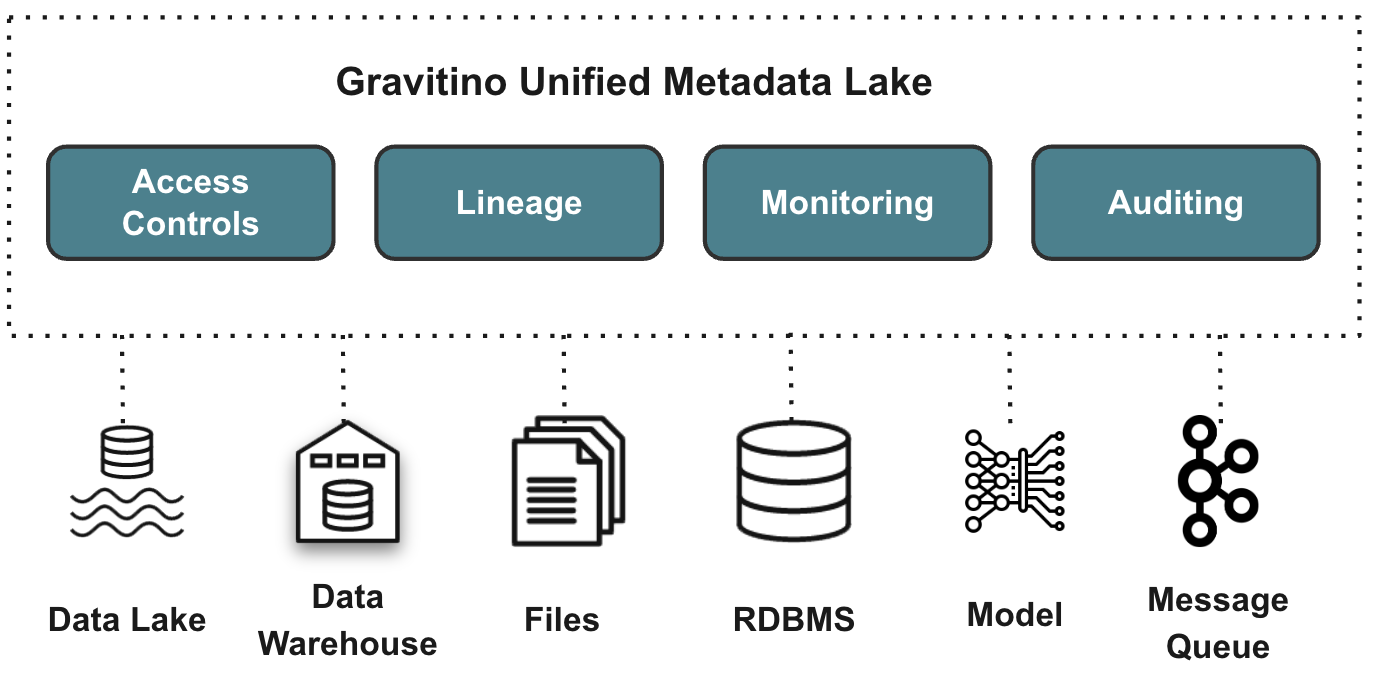Gravitino is a high-performance, geo-distributed, and federated metadata lake. It manages the metadata directly in different sources, types, and regions. It also provides users with unified metadata access for data and AI assets.
Gravitino aims to provide several key features:
- Single Source of Truth for multi-regional data with geo-distributed architecture support.
- Unified Data and AI asset management for both users and engines.
- Security in one place, centralizing the security for different sources.
- Built-in data management and data access management.
You can find the latest Gravitino documentation here in the doc folder, The README file only contains basic setup instructions.
Gravitino builds Gradle. To build Gravitino, please run:
./gradlew clean buildIf you want to build a distribution package, please run:
./gradlew compileDistributionto build a distribution package.
Or:
./gradlew assembleDistributionto build a compressed distribution package.
For the details of building and testing Gravitino, please see How to build Gravitino.
The Gravitino server configuration file, gravitino.conf, located in the conf directory and follows the standard property file format. You can modify the configuration within this file.
To start the Gravitino server, please run:
./bin/gravitino.sh startTo stop the Gravitino server, please run:
./bin/gravitino.sh stopGravitino provides a Trino connector to access the metadata in Gravitino. To use Trino with Gravitino, please follow the trino-gravitino-connector doc.
Gravitino is under the Apache License Version 2.0, See the LICENSE for the details.
Apache®, Apache Hadoop®, Apache Hive™, Apache Iceberg™, Apache Kafka®, Apache Spark™, Apache Submarine™, Apache Thrift™ and Apache Zeppelin™ are either registered trademarks or trademarks of the Apache Software Foundation in the United States and/or other countries.
